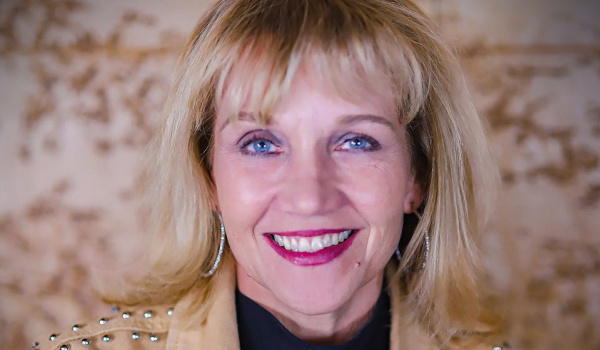DWN Publisher Notes
DWN Publisher Notes For 5/20/25
Friends – back from a VERY fun and much-needed LA birthday getaway! Now we're back with a fresh newsletter. On the flight home, somewhere in the clouds Bill Taylor found inspiration for this week's "THE LEAD." Don’t miss it, plus our interview with Mark Casady and the latest industry news all right here...READ UP!
cv
THE TAYLOR REPORT
The Taylor Market Report (5/20/25)
The evening sky is rosy red and beautiful. But that color is caused by a forest fire burning ever larger. Check your risk tolerance.
DWN ROUNDTABLES
DWN ROUNDTABLES: Agentic AI – Great Expectations Amid Expected Apprehension
For RIAs of all sizes, how successful agentic AI is in building efficiencies and driving growth for stakeholders is where the rubber will meet the road.
WEALTHTECH 3.0
WEALTHTECH 3.0: Uncertainty Isn’t the Enemy — It’s the Opportunity
While no one knows exactly where the market will land on any given day, one thing is certain: sales doesn’t wait for certainty. You don’t need a prediction model — you need a playbook.
FINTECH VIEWS
FINTECH VIEWS | Reading the Room: Reddit, Reality and the LPL/Commonwealth...
The March 2025 acquisition of Commonwealth Financial Network by LPL Financial hit an immediate nerve in wealth management, an industry where consolidation is endemic:...
FINTECH VIEWS: Sycamore’s Mike Overdorf on Consolidation in Wealth Management
Amid the wealth management industry’s rapid consolidation, many firms are grappling with operational challenges that are growing more and more complex. While mergers and...
FINTECH VIEWS: TradingBlock Launches Online Learning Hub for Options Education
Chicago-based online broker TradingBlock has recently launched a growing library of educational resources for engaged investors and options-curious traders who want to learn how...
FINTECH VIEWS: Docupace Acquires Hubly, a No-Code Workflow Platform
Docupace, the back-office solutions provider and parent company of PreciseFP, is expanding with the acquisition of Hubly, a Vancouver-based workflow management platform designed for...
AI & FINANCE
AI & Finance™ | News for the Week Ending 5/16/25
Welcome to another active week of AI in financial services headlines, by the way, we do have a lot to get to, but since...
AI EDUCATION: What Is AI Observability?
Each week we find a new topic for our readers to learn about in our AI Education column.
Today on AI Education we’re going to tackle...
AI REGS & RISKS: The Future of AI in Wealth—According to...
By Greg Woolf, AI RegRisk Think Tank
Conversation with a Wealth Industry Leader
Last week I sat down with Mark Casady—former Chairman & CEO of LPL Financial,...
Top 5 VC Deals of the Week in AI (5/16/25)
This week we continue our series on the top 5 VC-funded deals in AI.
This week our announcements are led by one deal exceeding the...
THE LEAD | RECENT COMMENTARY
Latest Posts
- All
- Advisor Tech Talk
- AI & Finance
- AI & Finance | News
- AI & Forecasting
- AI Education
- AI ILLUMINATIONS
- AI Intelligence
- AI Regs & Risk
- Apex Clearing
- Back Office Heroes
- Blockchain Education
- Chalice Network
- Crypto Education Series
- Crypto is Macro
- Decentralized Diaries
- DWealth Muse Podcast
- DWN AI Index
- DWN Lead Gen
- DWN Op-Eds
- DWN Publisher Notes
- DWN Roundtables
- Entoro Capital
- Entoro Investments
- Fintech & Philosophy Zoomcast
- Fintech Corner
- Fintech Luminaries
- Fintech Views
- Industry Briefs
- Intelligence for Growth
- Investment Management Series
- JIFFY.ai
- MarTech Minutes
- Orion
- Other
- Personal Insights
- Podcasts
- Practifi
- Principals
- Real Clear Crypto
- Refinitiv, An LSEG Business
- Rethink. Financial Advice Podcast
- Sarson Funds
- Standard Deviations Podcast
- Taylor Report
- The Al & Ivy (AI) Podcast
- The Lead
- TheALTInvestor
- Thought Leaders
- TIFIN
- Top 5 VC Deals | AI
- Top 5 VC Deals | Fintech
- Videos
- Wealthtech 3.0
- Wealthtech Insider
- Week in Digital Wealth
- Whitepapers
More
The Taylor Market Report (5/20/25)
The evening sky is rosy red and beautiful. But that color is caused by a forest fire burning ever larger. Check your risk tolerance.
DWN | The Al & Ivy (AI) Podcast, Episode 28 – Understanding Credit Ratings...
DWN's innovative podcast series with AI hosts, Al and Ivy, presents the most topical subject of the week and discusses it in an easy...
DWN Publisher Notes For 5/20/25
Friends – back from a VERY fun and much-needed LA birthday getaway! Now we're back with a fresh newsletter. On the flight home, somewhere in the clouds Bill Taylor found inspiration for this week's "THE LEAD." Don’t miss it, plus our interview with Mark Casady and the latest industry news all right here...READ UP!


































